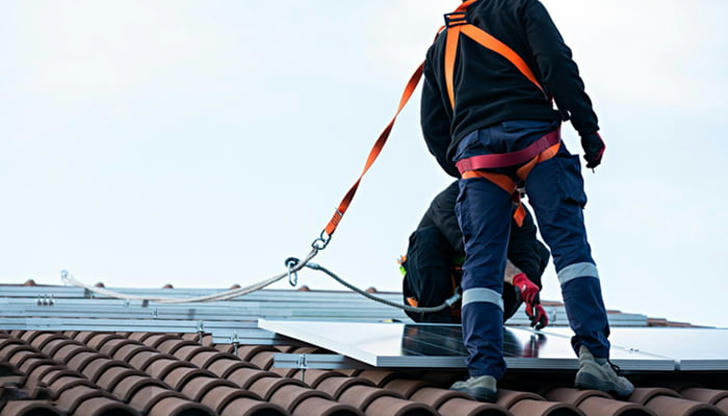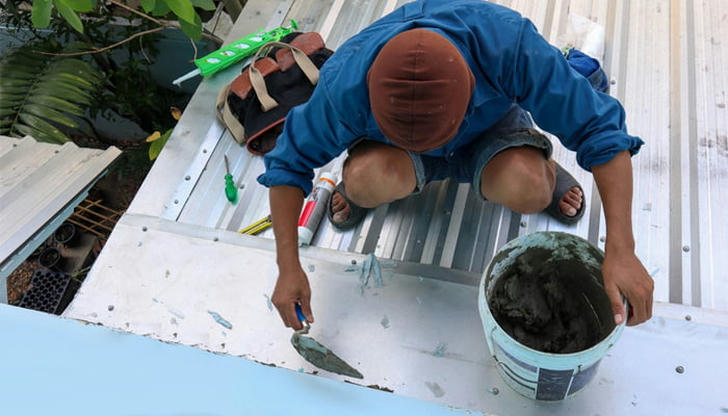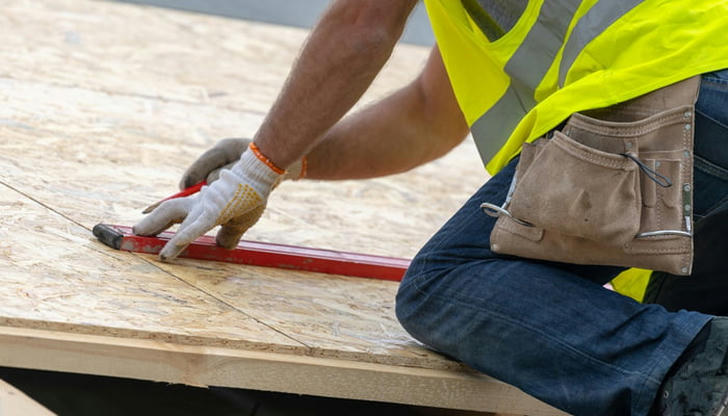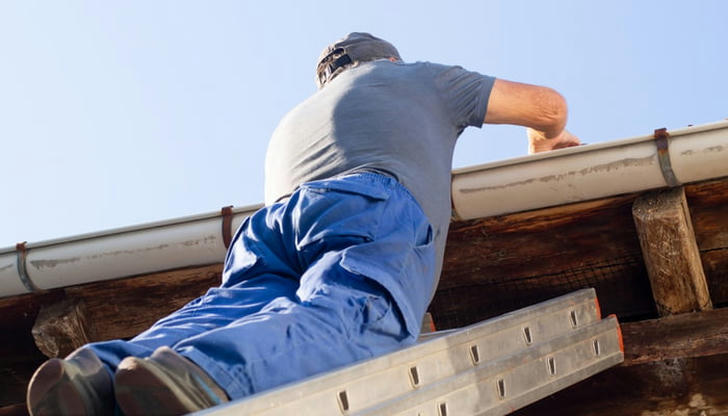Roof Leak Rescue: DIY Tips to Detect and Fix Roof Problems

Roof leaks can be a frustrating and messy problem, often occurring unexpectedly. While roofs are designed to last, various factors like cumulative damage and aging can increase the likelihood of leaks. Fortunately, there are ways to identify and address these issues yourself to prevent more severe damage. Here are some DIY tips for detecting and repairing roof leaks.
Detecting Roof Leaks
Identifying the signs of a roof leak early can prevent extensive water damage. Acting quickly when you notice a leak can save you significant time and money in repairs.
Signs Your Roof May Be Leaking
A water spot on your ceiling is an obvious indicator of a roof leak, suggesting either a significant leak or one that's been ongoing. However, there are other signs to look for before water reaches your ceiling:
Water stains on ceilings or walls
Water marks on the attic floor or ceiling
Missing shingles
Cracked or damaged shingles
Loose or damaged flashing
Damaged roof pipe boots
Damage to these areas makes your roof vulnerable to leaks. After severe weather, inspect your roof for these signs to address any damage promptly.
It's crucial to note that a water spot on your ceiling might not align with the actual leak location. Inspect the attic for flow lines or have a professional roofer examine the shingles to locate the source of the leak.
Leaks can severely harm your home by damaging the roof, ceilings, walls, and other areas. Left unchecked, they can also lead to mold growth, which poses significant health risks. Early detection and repair are vital for maintaining a healthy living environment.
Fixing Minor Roof Leaks
If you discover a minor roof leak, there are simple methods to temporarily fix it until a professional can handle more extensive repairs. Here are some quick solutions:
Apply caulk around exposed nails in the attic ceiling.
Replace missing or damaged shingles along with surrounding ones to ensure a proper seal.
Replace damaged or missing flashing and inspect it regularly to prevent leaks.
Repair or replace sheathing and underlayment as needed.
Weighing the Pros and Cons
Some homeowners might consider tackling small roof repairs themselves. While this is possible, it's essential to understand the benefits and drawbacks before deciding whether to proceed with DIY repairs or call in a professional.

Advantages of DIY Roof Repair
Cost Savings: One of the most significant advantages of DIY roof repair is the potential savings on labor costs. If you only need to buy materials, you can save a substantial amount compared to hiring professionals.
Control Over Schedule: DIY repairs allow you to work on your timeline. You can choose to perform the repairs at a time that suits your schedule, avoiding the disruptions that professional construction projects might cause to your family life.
Disadvantages of DIY Roof Repair
Time-Consuming: DIY repairs generally take much longer than professional repairs. Without a team of contractors, completing the work within a few days is unlikely.
Lack of Tools: Professional roofers have specialized tools that ensure the job is done quickly and correctly. As a DIYer, you might not have access to all the necessary equipment.
Warranty Risks: Many material warranties are void if the installation is not done correctly. Without knowledge of specific installation procedures for certain brands or types of shingles, you risk invalidating your warranty.
Potential for Mistakes: Even minor errors can lead to significant problems, requiring professional intervention. Roofing professionals have extensive experience and handle repairs regularly, which is hard to match.
Safety Concerns: DIY roofing increases the risk of physical injury and property damage. Without proper safety protocols and equipment, the likelihood of accidents is higher, especially with untrained helpers.
In summary, while DIY roof repair can save money and offer scheduling flexibility, the risks and challenges often outweigh these benefits. For most homeowners, hiring a professional is the safer and more effective choice.
However, if you have previous roofing experience and feel confident in your skills, our DIY Roofing Guide provides detailed information on replacing your roof. Before starting, review these essential DIY roof repair tips to ensure a successful project.
Essential DIY Roof Repair Tips

Even the most skilled homeowners might want to call a professional roofer for repairs, but if you choose to DIY, these tips will help you avoid problems and stay safe.
Wear the Right Gear
Proper attire is crucial for roofing tasks. Wear long sleeves, long pants, and non-slip rubber-soled shoes to protect against sharp objects and sun exposure. Safety goggles or glasses and sturdy work gloves are also essential. A roofing harness is a wise investment for safety, like the Guardian Roofing Harness Kit.
Use Roofing Adhesive and Caulk
For minor leaks, roofing adhesive and caulk can provide an extra layer of protection, ensuring a watertight seal. Re-sealing the area can prevent future leaks and give you peace of mind.
Use Chalk Lines
To ensure your shingles align correctly, use chalk lines. This is especially helpful when repairing a small section to match the original installation.
Never Work Alone
Always have at least one other person with you when working on the roof. They can assist by holding the ladder and handing you tools, ensuring safety and efficiency.
Invest in Quality Tools
Investing in tools like a high-pressure pneumatic nail gun or a cordless nailer can save time and effort. These tools are also versatile for other home projects.
Regularly Check Your Flashing
Flashing around chimneys, dormers, and walls is prone to damage. Regularly inspecting these areas can help catch issues early and prevent leaks.
Maintain Your Roof
Regular maintenance is key to avoiding costly repairs. Keep shingles, flashing, and gutters clean, and inspect your roof for any damage periodically.
Know Your Limits
Understanding your limitations can prevent injury and more significant issues. Attempting repairs beyond your skill level can void warranties and cause additional problems. Know when to call professionals.
When to Repair vs. Replace Your Roof

While DIY repairs can be effective, there are times when replacing the roof is a better option.
Out of Warranty
Check if your roof has a warranty. An expired warranty means repairs or replacements won't be covered. A new roof with a warranty can provide long-term peace of mind.
Repeated Leaks
Persistent leaks indicate that repairs might not be sufficient. Extensive leaks can cause interior damage and mold growth, making replacement a more viable solution.
Aging Roof
Roofs have a limited lifespan. If your roof is reaching 20, 30, or 40 years, depending on the material, frequent issues might signal the need for replacement. A professional can inspect and advise.
Sagging Roof
Sagging or bulging areas are signs of structural issues. This could mean rotted supports beneath the shingles, necessitating a new roof.
Significant Water Damage
Water damage can compromise shingles, wood, and your home's structure. Look for signs like bubbling walls, large stains, flat attic insulation, and discolored shingles. Addressing extensive damage quickly is crucial.
Selling Your Home
A new roof can increase your home's value and attract buyers. Investing in a new roof can yield a significant return when selling.
Recurrent Ice Dams
Ice dams form when snow melts and refreezes at the roof's edge, causing leaks. Persistent ice dams might require replacing shingles and adding an ice dam shield.
Deciding between repair and replacement depends on the damage extent and roof age. If uncertain, consult a professional roofer for an accurate assessment and the best advice for your home.
